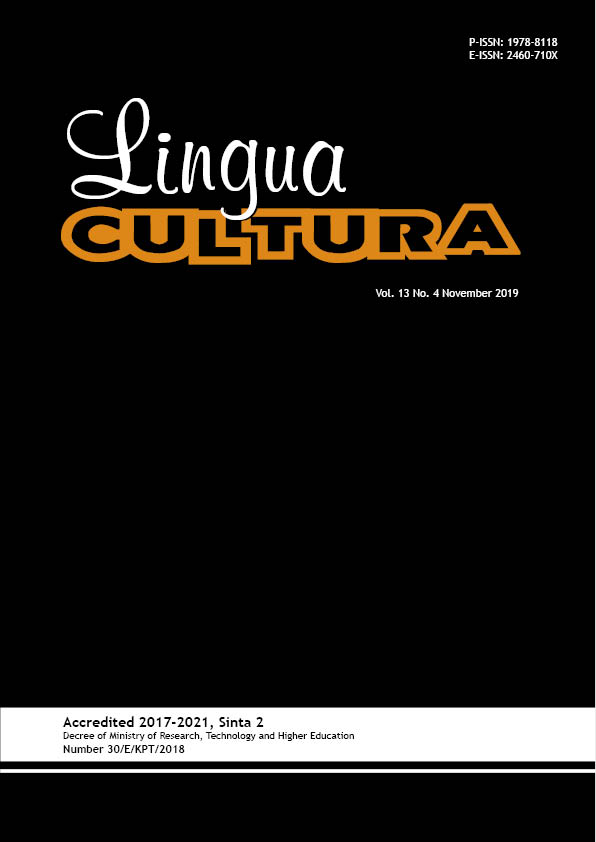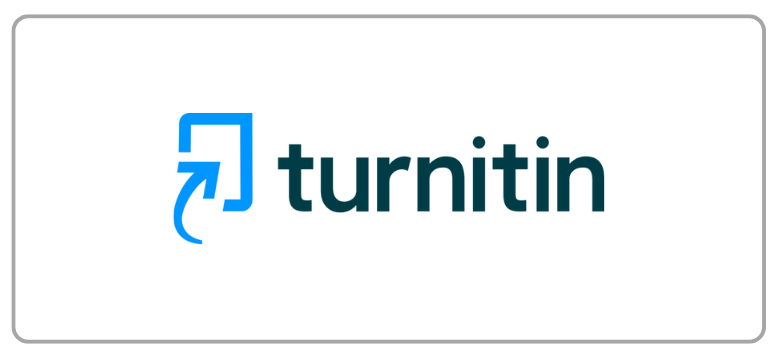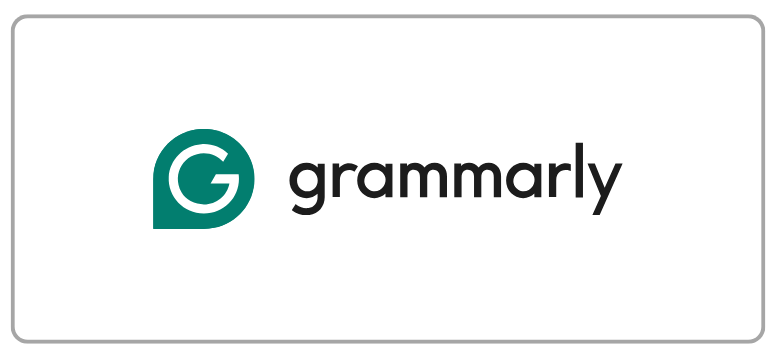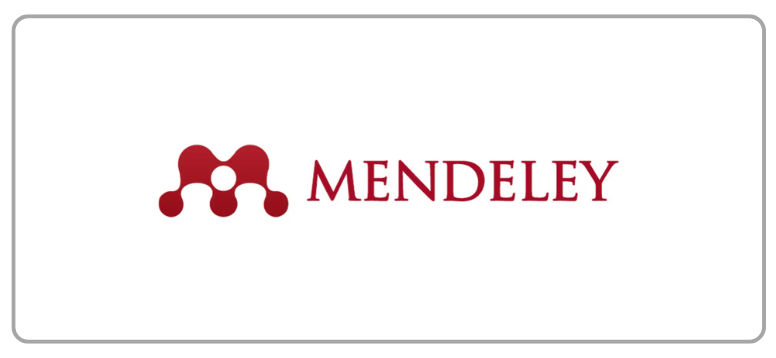The Translation of Lexical Collocations in Undergraduate Students’ Theses’ Abstract: Students Versus Google Translate
DOI:
https://doi.org/10.21512/lc.v13i4.6067Keywords:
Google Translate, lexical collocations, translation error, students’ translationAbstract
This research intended to compare the translations of lexical collocations found in the abstract section of students’ theses. The purposes were to find out the errors in translating lexical collocation either by Google Translate or student translator. The data were taken from twenty working papers of English Literature students at Binus University. The abstracts of these theses (in English and Indonesian) were then processed with Google Translate. Thus, there were four sets of data to analyze: (1) Students’ Text in Indonesian (STI), (2) Google Translate of STI in English (GTE), (3) Students’ Text in English (STE), and (4) Google Translate of STE in Indonesian (GTI). From the data, samples of collocations were taken and categorized based on Hill’s classification of lexical collocations. The lexical collocations found in the four sets of data were scrutinized, compared, and analyzed to find the errors in forms and meaning as well as in the translation. The results reveal that errors in translating collocations are mostly made by Google Translate rather than the students. This research implies that Google Translate still needs improvement in translating collocations, but it is also possible that translation errors occur because of students’ misuse of collocation.
References
Agah, M., & Soori, A. (2015). Comparative study of collocation among the languages. Language in India, 15(1), 527–537.
Aiken, M. (2019). An updated evaluation of Google Translate accuracy. Studies in Linguistics and Literature, 3(3), 253–260. http://doi.org/10.22158/sll.v3n3p253.
Aiken, M., & Balan, S. (2011). An analysis of Google Translate accuracy. Translation Journal, 16(2), 25–32.
Al-Khresheh, M. H. (2016). A review study of contrastive analysis theory. Journal of Advances in Humanities and Social Sciences, 2(6), 49–59. http://doi.org/10.20474/jahss-2.6.5.
Allue, B. R. (2017). The reliability and limitations of Google Translate: A bilingual, bidirectional, and genre-based evaluation. Entreculturas, 9, 67–80.
Ambawani, S. (2014). Grammatical errors on Indonesian-English translation by Google Translate. In Prosiding Seminar Nasional Aplikasi Sains & Teknologi. Yogyakarta, Indonesia. pp. 333–338.
Baker, M. (2018). In other words: A coursebook on translatoin (Third Edition). London: Routledge.
Dhakar, B. S., Sinha, S. K., & Pandey, K. K. (2013). A survey of translation quality of English to Hindi online translation systems (Google and Bing). International Journal of Scientific and Research Publications, 3(1), 2250–3153.
Ghasemi, H., & Hashemian, M. (2016). A comparative study of Google Translate translations: An error analysis of English-to-Persian and Persian-to-English translations. English Language Teaching, 9(3), 13–17. http://doi.org/10.5539/elt.v9n3p13.
Haghighi, H. (2018). A multifaceted approach to the translation of collocations from English to Persian. Applied Linguistics Research Journal, 2(2), 8–25. http://doi.org/10.14744/alrj.2018.03511.
Hill, J. (2000). Revising priorities: From grammatical failure to collocational success. In Teaching Collocation: Further Developments in the Lexical Approach (p. 245). London: LTP.
House, J. (2014). Translation quality assessment: Past and present. In Translation: A Multidisciplinary Approach. London: Palgrave Macmillan UK. pp. 241–264. http://doi.org/10.1057/9781137025487_13.
Ismail, A., & Hartono, R. (2016). Errors made in Google Translate in the Indonesian to English translation of news items texts. Journal of English Language Teaching, 5(2), 1–6. doi: https://doi.org/10.15294/elt.v5i2.11228.
Jabak, O. O., Abdullah, S., & Mustapha, N. F. (2016). The difficulty of translating collocations from Arabic into English encountered by a sample of Arab students. SSRN, 3(1), 1-10.
Karami, O. (2014). The brief view on Google Translate machine. In Artificial Intelligence on Natural Language. Vienna: Vienna University of Technology.
Karjo, C. H. (2015). Toward a better use of Google Translate. Jakarta: Atma Jaya University.
Karjo, C. H. (2016). IT-based translation: How accurate are they? In KIMLI. Denpasar: MLI. pp. 128–131.
Koponen, M., & Salmi, L. (2015). On the correctness of machine translation: A machine translation post-editing task. The Journal of Specialised Translation, 23(23), 118–136.
Medvedev, G. (2016). Google Translate in teaching English. The Journal of Teaching English for Specific and Academic Purposes, 4(1), 181–193.
Napitupulu, S. (2017). Analysing Indonesian-English abstract translation errors by Google Translate. International Journal of English Language and Linguistics Research, 5(2), 15–23.
Newmark, P. (1988). A textbook of translation. New York: Prentice Hall.
Pârlog, H., & Punga, L. (2017). Difficulties of translating English collocations into Romanian. B.A.S. British and American Studies, 23, 255–274.
Raza, M. A., & Nor, F. M. (2018). Google Translate in EFL classroom. International Journal of Translation, 30(1), 7–21.
Setiawan, Y. (2014). English Translation errors in abstract of educational administration student of post graduate school of State University in Medan. Journal of Education, 7(1), 67–71.
Turovsky, B. (2016). Found in translation: More accurate, fluent sentences in Google Translate. Retrieved October 23, 2019 from https://blog.google/products/translate/found-translation-more-
accurate-fluent-sentences-google-translate/.
Utami, S. (2017). The source of errors in Indonesian-English translation. Jurnal KATA, 1(2), 192–202.
Downloads
Published
How to Cite
Issue
Section
License
Authors who publish with this journal agree to the following terms:
a. Authors retain copyright and grant the journal right of first publication with the work simultaneously licensed under a Creative Commons Attribution License - Share Alike that allows others to share the work with an acknowledgment of the work's authorship and initial publication in this journal.
b. Authors are able to enter into separate, additional contractual arrangements for the non-exclusive distribution of the journal's published version of the work (e.g., post it to an institutional repository or publish it in a book), with an acknowledgment of its initial publication in this journal.
c. Authors are permitted and encouraged to post their work online (e.g., in institutional repositories or on their website) prior to and during the submission process, as it can lead to productive exchanges, as well as earlier and greater citation of published work.
USER RIGHTS
All articles published Open Access will be immediately and permanently free for everyone to read and download. We are continuously working with our author communities to select the best choice of license options, currently being defined for this journal as follows: Creative Commons Attribution-Share Alike (CC BY-SA)


















